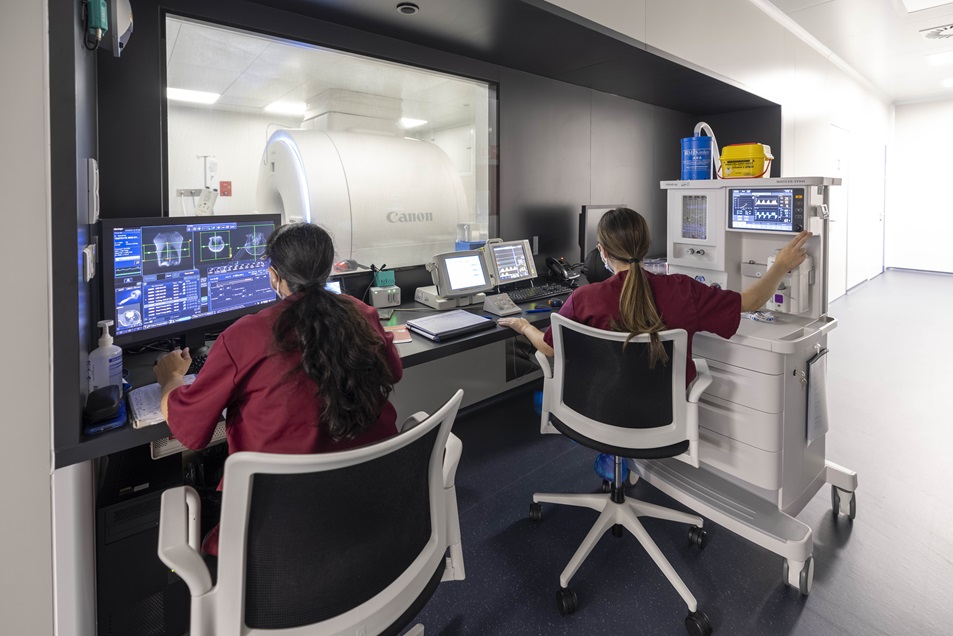3R

Over the past few years, the CMCiB has been involved in numerous studies where bioimaging has played a crucial role, significantly contributing to the 3R principles by Refining, Replacing and Reducing the number of animals involved. The Bioimaging Unit has helped evaluate the efficacy of treatments, techniques or surgical procedures, and has contributed to preclinical research in animal models, as well as clinical research involving human participants in Magnetic Resonance Imaging (MRI) studies.
In all these cases, CMCiB's Bioimaging Unit has worked diligently with equipment partners and suppliers to implement the most advanced tools and strategies to meet the needs of the studies effectively.
CMCiB is equipped with the following bioimaging tecnologies, which have contributed to develop new procedures, implement specific MRI sequences, and create mechanisms and workflows:
- Canon Medical Vantage Galan 3 Tesla MRI scanner
- Canon Medical Alphenix Core+ Interventional System integrated in a Vascular and Interventional Radiology room (VIR)
- Canon surgical C-arm
- Ultrasound, 3D laparoscopy, and endoscopy for large animal models
- Micro-CT, luminescence, and fluorescence in-vivo imaging systems for tissue or small animal models.
The CMCiB Bioimaging team dedicates all its efforts and resources to address the new challenges faced by research groups in their preclinical projects.
Additionally, the Computational Anatomy Unit (CAU) has recently been established to address other relevant needs in medical imaging and is in the process of consolidating its services.
The CAU is equipped with a server and computer cluster with software for analysing cardiac MRI images and processing neuroimaging studies. To extend the unit's reach, CMCiB has enabled a platform to open this infrastructure to the world, facilitating remote working and secure data sharing. For greater impact, the CAU is also setting up all the infrastructure to receive data via ARIADNA (ARchive of Imaging datA for the Development of New Applications for preclinical and clinical research) platform, enabling federated data management and centralisation of external data collection. Developments are underway to connect to several DICOM nodes in Spain and to expand the computing and storage capacity resources. The aim is to enable multi-centre projects, facilitate population and epidemiological studies, and carry out radiomics and AI research in a traceable and reproducible manner.
The future of bioimaging at CMCiB is to meet the most advanced biomedical research needs, always facilitating the transferability of results to improve human health while minimizing the use of animals.
